 Image search results - "setagaya-ku" Image search results - "setagaya-ku" |

Hanegi Park is near Odakyu Umegaoka Station ("Umegaoka" means plum hill). 小田急梅ヶ丘駅
|
|

Entrance to Hanegi Park's plum grove
|
|

The plum trees are on a small hill.
|
|

Hanegi Park has plum blossoms in mid-Feb. to early Mar. It has about 700 plum trees and also sports facilities and public library.
|
|
|
|
|
|
|
|
|

Picnic area
|
|

Stone monument for "Haru no Tsuki" haiku poem by Nakamura Teijo. 「春の月」中村汀女
|
|

Stone monument for "Haru no Tsuki" haiku poem by Nakamura Teijo. 「春の月」中村汀女
|
|
|
|
|

Weeping plum blossoms
|
|
|
|
|
|

Flower pair
|
|

Near park entrance
|
|
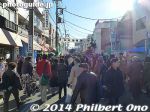
The Setagaya Boro-ichi is held on Dec. 15-16 and Jan. 15-16 annually.A large outdoor flea market of used and new clothing, antiques, household items, food, plants, and crafts.
|
|
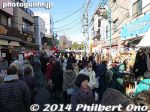
All sorts of knickknacks on sale. Some 700 stalls line the a few narrow streets near Setagaya and Kamimachi Stations on the Tokyu Setagaya Line.It can get pretty crowded when it's not raining.
|
|
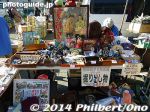
Boro-ichi started over 400 years ago in 1578 when Odawara daimyo Lord Hojo Ujimasa opened a market place in this area. It started out selling old clothing and used goods, so it came to be called "boro-ichi" (rag market). Today, vendors also sell antiques, used books, food, household items, and all kinds of knick-knacks.
|
|
|
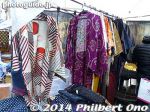
Old kimono.
|
|
|
|
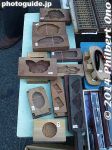
Molds
|
|
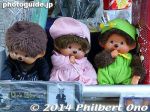
Monchhichi
|
|
|
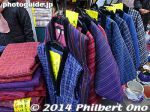
Hanten
|
|
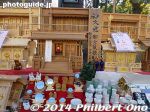
Household shrines
|
|
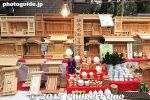
Household shrines, kamidana
|
|
|
|
|
|
|
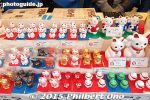
Maneki neko or beckoning cat
|
|
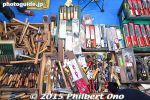
Tools and knives
|
|
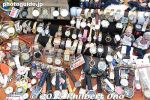
Wristwatches
|
|
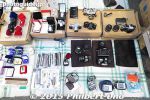
Small cameras
|
|
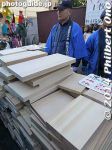
Cutting boards
|
|
|
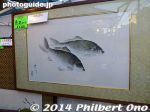
Gyotaku print (Fish print)
|
|
|
|
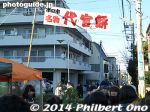
Way to daikan mochi.
|
|
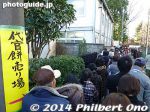
Long line to buy daikan mochi, one of the famous things about the boro-ichi.
|
|
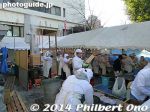
Making daikan mochi on site.
|
|
|
|
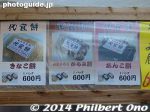
Three flavors of daikan mochi.
|
|
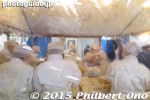
Busy preparing and packaging the mochi.
|
|
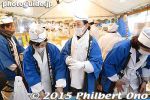
Mochi sellers
|
|
|
|
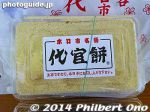
Kinako (sweet soybean flour) daikan mochi
|
|
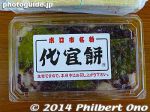
Azuki daikan mochi.
|
|
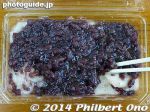
They really pile on the azuki.
|
|
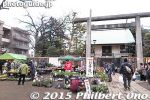
Near the shrine are potted flowers for sale.
|
|
|
|
|
|
|
|
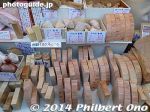
Very fragrant pieces of wood such as hinoki cypress.
|
|
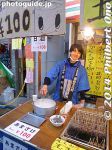
Amazake
|
|
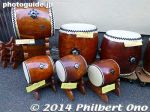
Taiko drums for sale
|
|
|
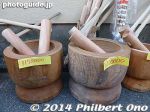
Mochi mortars for sale.
|
|
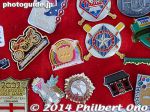
Pins for collectors.
|
|
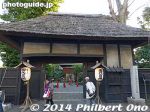
Gate to the Daikan Yashiki.
|
|
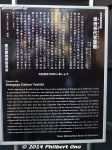
Daikan Yashiki was the residence of the local acting administrator of Setagaya.
|
|
|
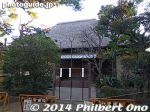
Daikan Yashiki
|
|
|
|
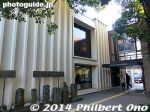
Setagaya Museum of History is near the Daikan Yashiki.
|
|
|
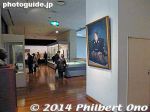
Inside the Setagaya Museum of History.
|
|
|
|
|
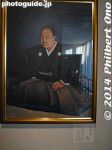
Portrait of Lord Ii Naosuke, Tokugawa shogunate's chief minister. He was the lord of Hikone Castle in Shiga (Omi) Prefecture.
|
|
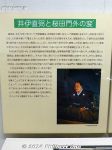
The Ii Clan possessed a major part of Setagaya after it was given to them by Shogun Tokugawa Iemitsu.
|
|
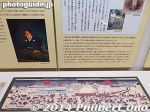
Naosuke was assassinated in Tokyo.
|
|

Naosuke was assassinated in Tokyo.
|
|
|
|
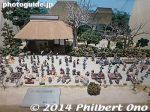
Setagaya Boro-ichi in the old days.
|
|
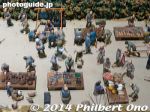
Setagaya Boro-ichi in the old days.
|
|
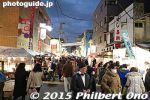
Also crowded at night.
|
|
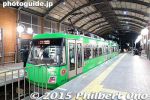
Kamimachi Station on the Tokyu Setagaya Line.
|
|

Path to front gate of Gotokuji Temple known as the Ii Clan's family temple. Over 300 lords (incuding 6 Hikone Castle lords), wives, concubines, and children related to the Ii Clan from Hikone Castle in Shiga Prefecture, are buried here.
|
|
|

Path to front gate of Gotokuji Temple.
|
|

Somon front gate of Gotokuji Temple.
|
|

Somon front gate of Gotokuji Temple in Setagaya, Tokyo. On the left corner is a historic site stone marker for Ii Naosuke's gravesite. 豪徳寺
|
|

Historic site marker for Ii Naosuke's gravesite. Gotokuji Temple is known as the Ii Clan's family temple. Over 300 lords, wives, concubines, and children related to the Ii Clan, from Hikone Castle in Shiga Prefecture, are buried here.
|
|

After going through the Somon front gate, we see the pagoda and the Butsuden Buddha Hall straight ahead.
|
|
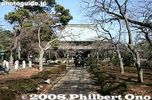
Butsuden Buddha Hall straight ahead.
|
|

Incense burner and Butsuden Buddha Hall.
|
|

Butsuden Buddha Hall, Gotokuji temple, Setagaya, Tokyo. This was renovated by Lord Ii Naotaka's wife and oldest daughter. 仏殿
|
|

Roof ridge of Butsuden includes the family crest for the Ii Clan. Gotokuji temple.
|
|

Butsuden Buddha Hall
|
|

Inside Butsuden Buddha Hall 仏殿
|
|
|

Butsuden Buddha Hall side view.
|
|

Butsuden Buddha Hall and the Hondo main worship hall behind on the right.
|
|

Gotokuji temple's Hondo Main Hall 本堂
|
|

Gotokuji temple's Hondo Main Hall, Setagaya, Tokyo. Ii clan's family temple. 本堂
|
|

Hondo Main Hall
|
|

Inside Hondo Main Hall
|
|

Ii clan crest on rain water barrel under the roof of Gotokuji temple Hondo Hall, Setagaya, Tokyo.
|
|

Hondo Main Hall
|
|

View from Hondo Main Hall
|
|

Bell tower
|
|
|
|

Three-story pagoda
|
|

Three-story pagoda, recently built.
|
|
|
|
|
|

Temple office sells souvenirs such as the maneki neko beckoning cat in various sizes (and prices).
|
|

Temple office sells maneki neko beckoning cat in various sizes (and prices).
|
|

Path to the temple cemetery where the Ii clan is buried.
|
|

Gate to Maneki Neko Beckoning Cat Temple. There are a few theories (or legends) as to how the maneki neko (Beckoning Cat) was created. One theory comes from this temple.
|
|

Maneki Neko Beckoning Cat Temple is a small worship hall dedicated to the beckoning cat. On the left of the temple, notice a little roofed shelf. 猫観音を祀る招猫殿
|
|

Inside Beckoning Cat Temple. The altar's objects of worship are numerous beckoning cat dolls.
|
|

One day, Lord Ii Naotaka was doing falconry and was on his way home when it started to rain. He sought shelter under a tree at the temple. Then he saw a cat raising its paw...He went to the cat and then lightning struck the tree he was standing under. In appreciation, Naotaka gave donations to the temple.
|
|

On the left of the Beckoning Cat Temple is a shelf where you can offer your lucky cat after it has brought you good luck.
|
|

Shelf for beckoning cats, maneki neko at Gotokuji temple in Setagaya, Tokyo.
|
|

Shelf for beckoning cats, maneki neko. Gotokuji temple, Setagaya, Tokyo.
|
|

Beckoning cats, maneki neko, which did their duty for their owners who now offer them to the temple as a gesture of thanks. Gotokuji temple, Tokyo.
|
|

Gotokuji temple votive tablet. This cat connection with Ii Naotaka gave rise to Hiko-nyan, the official mascot of Hikone, Shiga Prefecture.
|
|

Way to cemetery. Six Hikone Castle lords, including Ii Naosuke, have graves here. Setagaya was the domain of the Ii clan who often worked in the Tokugawa government.
|
|

Straight ahead is the grave of Lord Ii Naotaka, the 2nd lord of Hikone Castle in Shiga Prefecture.
|
|

Turn left and you see this. Ii clan graves on both sides. Lord Ii Naosuke's grave is at the very end on the left.
|
|

Lord Ii Naosuke's grave is at the very end on the left.
|
|

Grave of Lord Ii Naosuke (1815-1860), the lord of Hikone Castle in Shiga Prefecture and Chief Minister of the Tokugawa Shogun's government. Gotokuji temple, Setagaya-ku, Tokyo. 井伊直弼の墓 豪徳寺
|
|

Only Ii Naosuke's grave has a sign explaining about him.
|
|

Grave of Lord Ii Naosuke (1815-1860), the lord of Hikone Castle in Shiga Prefecture and Chief Minister of the Tokugawa Shogun's government. Gotokuji temple, Setagaya-ku, Tokyo. 井伊直弼の墓 豪徳寺
|
|

Gravestone of Ii Naosuke.
|
|

Right side of Lord Ii Naosuke's grave.
|
|

Tree of white camellias grow about Lord Ii Naosuke's grave.
|
|

Grave of Lord Ii Naosuke's wife.
|
|
|

Grave of Lord Ii Naohide (1755-1789). He served as Tairo Chief Minister in the Tokugawa government. Gotokuji temple, Setagaya, Tokyo 井伊直幸
|
|

Grave of Lord Ii Naotaka's eldest daughter who donated a lot to the temple. 井伊直孝長女
|
|
|
|

Grave of Lord Ii Naotaka (1590-1659), 2nd lord of Hikone, Shiga. Gotokuji temple, Setagaya, Tokyo 井伊直孝
|
|

Grave of Lord Ii Naoyoshi (1727-1754), Gotokuji temple, Setagaya, Tokyo 井伊直禔
|
|

Grave of Lord Ii Naotsune (1693-1710), Gotokuji temple, Setagaya, Tokyo 井伊直恒
|
|

Grave of Lord Ii Naonori on right.
|
|

Grave of Lord Ii Naonori (1848-1904), Gotokuji temple, Setagaya, Tokyo 井伊直憲の墓
|
|

Six Jizo
|
|

Higashimon East Gate (closed)
|
|

Ii family crest on East Gate
|
|

The temple is surrounded by a wall with barbed wire.
|
|
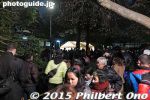
On New Year's Eve, Gotokuji temple allows people to ring the temple bell to ring out the old year in a ceremony called Joya-no-kane.
|
|
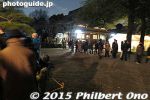
The line of people got longer and longer as midnight approached.
|
|
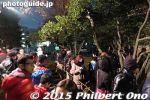
Quite a few people braved the cold to ring the temple bell on New Year's Eve on Dec. 31, 2014.
|
|
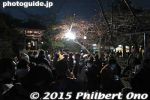
Temple bell in sight. Had to wait about an hour.
|
|
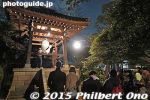
Gotokuji's temple bell on New Year's Eve.
|
|

Ringing Gotokuji's temple bell on New Year's Eve.
|
|
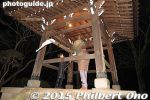
Each person got to ring the bell only once.
|
|
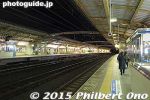
Gotokuji Station on early New Year's morning.
|
|
|

Odakyu Line Gotokuji Station 豪徳寺駅
|
|

Odakyu Line Gotokuji Station 豪徳寺駅
|
|

Odakyu Line Gotokuji Station platform 豪徳寺駅
|
|
|

Narrow road from Gotokuji Station to Gotokuji Temple. Cars just whiz by.
|
|
|
|